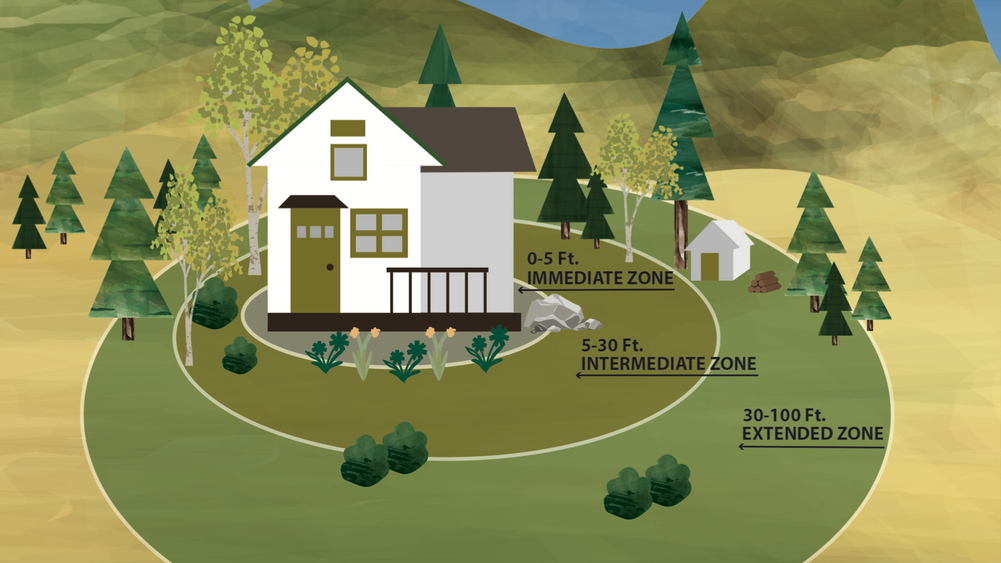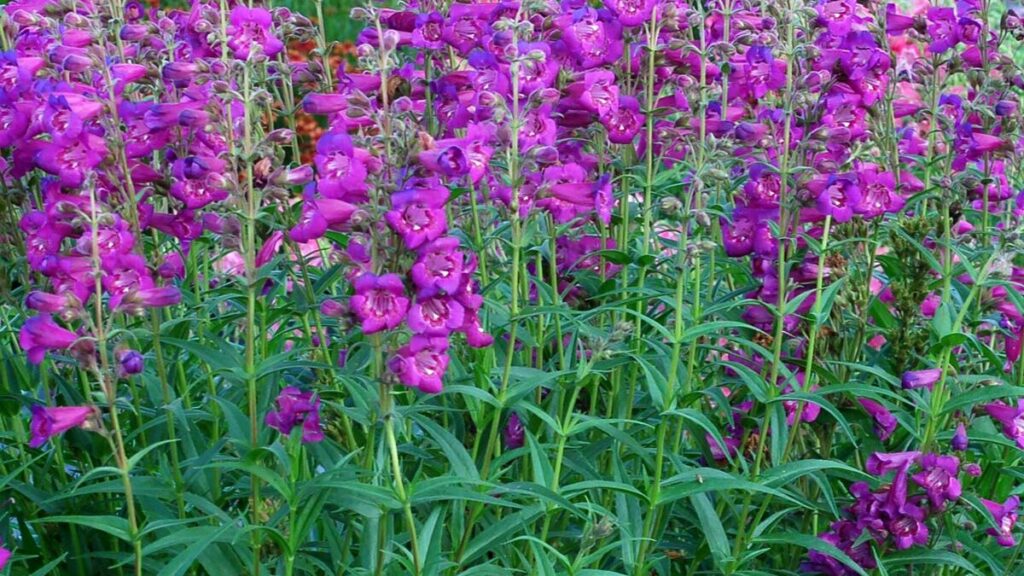July 2024 | Native Edge Landscapes
What is Fire Resistant Landscaping?
Fire-resistant landscaping on Colorado’s Front Range incorporates principles and plant selections designed to minimize the spread of wildfires and protect homes. The key features are 1) creating defensible space 2) choosing fire-resistant plants, and 3) maintaining the landscape to reduce fuel loads. Let’s dig in.
Defensible Space Zones

Defensible space is divided into three zones, each with specific guidelines:
Zone 1: Immediate Zone (0-5 feet from structures)
- Plants and Materials: Use non-combustible materials like gravel, pavers, or rock mulch. Avoid wood chips and flammable vegetation. Opt for low-growing, well-watered, and fire-resistant plants such as succulents or ground covers.
- Maintenance: Regularly clear dead plants, leaves, and debris. Ensure no vegetation is touching the house, deck, or other structures.
Zone 2: Intermediate Zone (5-30 feet from structures)
- Plants and Materials: Select fire-resistant, low-growing plants that are spaced to prevent fire from spreading. Shrubs should be well-maintained and trees should have their branches pruned to at least 10 feet off the ground.
- Maintenance: Regularly mow grasses and remove dead plant material. Ensure proper spacing between plants and avoid dense clusters. Trim tree branches and remove any that are within 10 feet of other trees.
Zone 3: Extended Zone (30-100 feet from structures)
- Plants and Materials: Use native and fire-resistant plants that require minimal watering. Maintain a mix of trees, shrubs, and grasses with sufficient spacing to prevent the rapid spread of fire.
- Maintenance: Clear dead plant material, fallen branches, and other debris. Regularly mow grasses and thin out dense vegetation.
Plant Selection

Choose plants that have a high moisture content, are low in resins, oils, and waxes, and are well-adapted to Colorado’s climate. Some fire-resistant plants for Colorado’s Front Range include:
- Ground Covers: Creeping Mahonia (Mahonia repens), Kinnikinnick (Arctostaphylos uva-ursi), Ice Plant (Delosperma spp.)
- Shrubs: Serviceberry (Amelanchier alnifolia), Currant (Ribes spp.), Sumac (Rhus spp.)
- Trees: Aspen (Populus tremuloides), Rocky Mountain Maple (Acer glabrum), Ponderosa Pine (Pinus ponderosa, with proper spacing and maintenance)
- Our Top 10 Fire Resistant Native Plants for Colorado Landscapes
Maintenance Practices

Regular maintenance is crucial for a fire-resistant landscape:
- Pruning: Regularly prune trees and shrubs to remove dead or overhanging branches. Keep tree branches at least 10 feet from other trees and from structures.
- Mowing & Trimming: Mow grasses regularly to keep them short, especially during fire season.
- Debris Removal: Continuously remove dead plant material, leaves, and other debris that can act as fuel for fires.
- Irrigation: Ensure plants are adequately watered, especially during dry periods, to maintain their moisture content.
Landscape Design Tips
- Avoid Ladder Fuels: Prevent fire from climbing from the ground into trees by removing lower branches and maintaining vertical separation between shrubs and trees.
- Hardscaping: Incorporate firebreaks with non-combustible materials like stone, gravel paths, patios, and retaining walls.
- Hydrozoning: Group plants with similar water needs together to ensure efficient irrigation and maintain plant health.
By following these guidelines, homeowners on Colorado’s Front Range can create a landscape that is both aesthetically pleasing and resilient to wildfires.
Get In Touch
To schedule a consultation or request services please call 303-245-9166, send an email to info@nativeedgelandscapes.com or Get In Touch through our website. One of our Customer Care Representatives will be happy to help.

